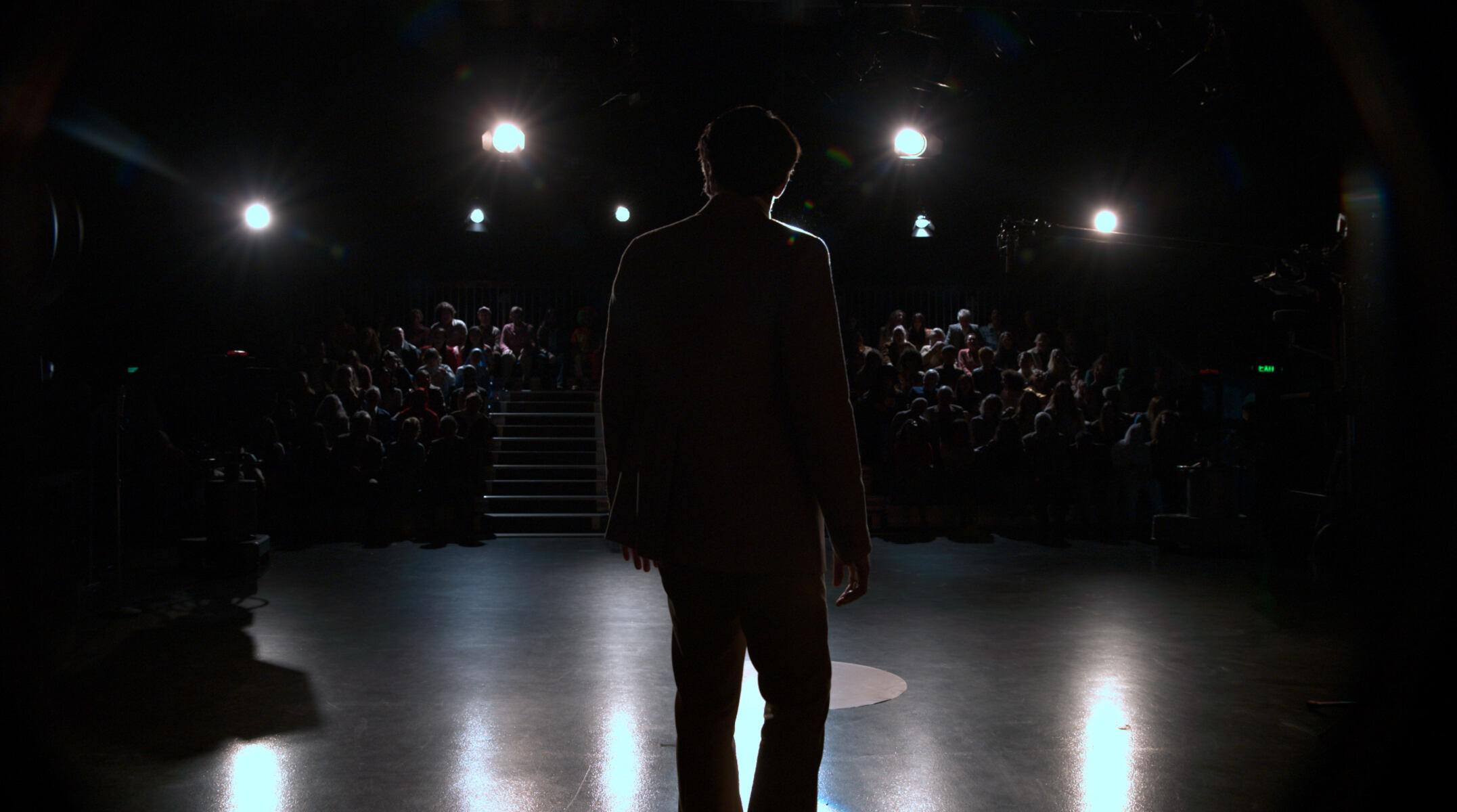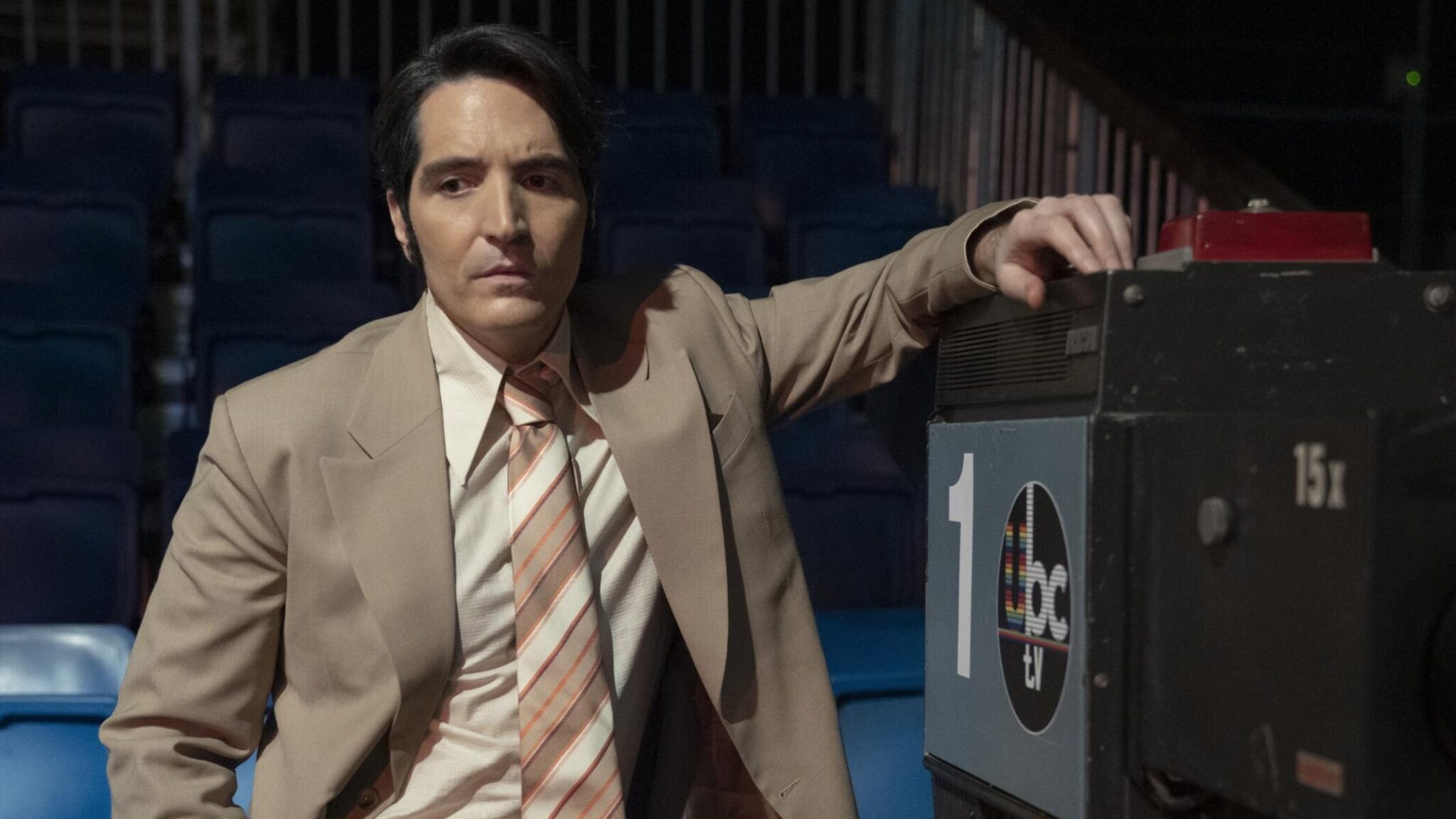Credit: Maslow Entertainment.
From Kanye’s body-swap to Jim Carrey’s not so subtle messaging about the illuminati on Jimmy Kimmel Live, the true nature of what lurks amongst the Hollywood elite has intrigued the public for some time now. As such, it was the perfect time for Australian filmmakers Colin Cairnes and Cameron Cairnes to release their horror film Late Night With The Devil (2023).
Late Night with the Devil follows Jack Delroy played by David Dastmalchian, a talk show host who struggles to gain good ratings on his late night talk show Night Owls, while also grieving his late wife and competing with other late night talk shows. Delroy takes his work to extremes by inviting four guests onto his show in the hopes of them saving the show’s cancellation; a psychic (Fayssal Bazzi), a sceptic (Ian Hunt), a parapsychologist (Laura Gordon) and a possessed girl (Ingrid Torelli).
The film follows a horror movie formula, borrowing character clichés like the ‘demonic little girl’ and the protagonist hiding a deep secret that is eventually revealed. There are spooky moments in this film but they don’t tend to last very long and can come across as gimmicky. The Cairnes’ also introduce a universe of cults and supernatural elements to the film’s canon which is put to the side in priority of rounding out the narrative. These elements are at times gimmicky, yet ultimately working in its favour as it contributes to the classic 1970s late night talk show aesthetics, however, at the expense of the main narrative.
Through cuts between talk show segments and ‘behind-the-scenes’ footage, the Cairnes’ skilfully alert the audience to when we are supposed to feel like we are in the show and when we are being fed exclusive information. Employing a fresh perspective which helped break up the intense, and at times, overwhelmingly stylistic segments of the talk show.
Additionally, the use of narration during the film’s initial moments was noted by the Cairnes’ in an interview as an inspiration drawn from the film The Killing of America. The prologue sets up Delroy’s background though removing us from him, preventing a connection from forming between the protagonist and the viewer in favour of emphasising the aesthetic of the 1970s. Thus, during the climax and ending of the film, the supposed empathising with Delroy felt unnatural. As the film went on, the black-and-white cinematography and split screens began to feel repetitive rather than being employed judiciously.
David Dastmalchian who plays protagonist Jack Delroy presents a psychologically trapped talk show host in a manner that screams desperate yet earnest. Dastmalchian looks and sounds the part perfectly, while also utilising his screen time to create the tension within scenes through a subtle but eerie nervousness.
He stated in an interview, “I never want to limit myself… but sometimes it’s scary, trying to put yourself out in a way.” Before this leading role in which he shows off his charisma, Dastmalchian was relegated to being typecast as a ‘character actor’ in smaller roles, including in The Dark Knight (2008), Dune (2021), and Oppenheimer (2023). He also stars opposite an all-Aussie cast — a cinematic win — and detail that may be missed by viewers. Some actors had no prior TV or film experience such as Rhys Auteri, who plays Gus McConnell, the talk show host’s sidekick with a weary intuition.
The film succeeds in creating a 1970s atmosphere as the Cairnes’ keep the nostalgia alive through its grainy camera effects, retro graphics, costumes and set design. However, we must consider the use of Artificial Intelligence (AI) in the intermission graphics between sequences and the subsequent discourse which rightfully raised questions about the ethics of AI in art. To what extent can we utilise AI in creative roles? Is it taking up space that could otherwise be given to real artists? The Cairnes’ take a lazy approach, making their final edits look messy and uncared for. Understandably so, it’s an indie film which usually means a tight budget, but normalising this use of AI can be detrimental for the film industry.
All-in-all, the film has been a big success in the United States for directors Colin and Cameron Cairnes, for the Australian filmmaking scene and for Dastmalchian to break out of the ‘character actor’ box. However, like most contemporary horror films, the film seems to not know what to do with what it sets up. The film has a somewhat predictable ending, using dream sequences to wrap up the story which I believe could be a result of the writer’s reaching a dead-end and not knowing where else to take the story.
While the $666,666 box office figure was clever publicity, it cannot make up for how greater the film could have been, had it consistently focused on the narrative over aesthetic.
Late Night with the Devil (2023) will be in Australian cinemas from April 11.






